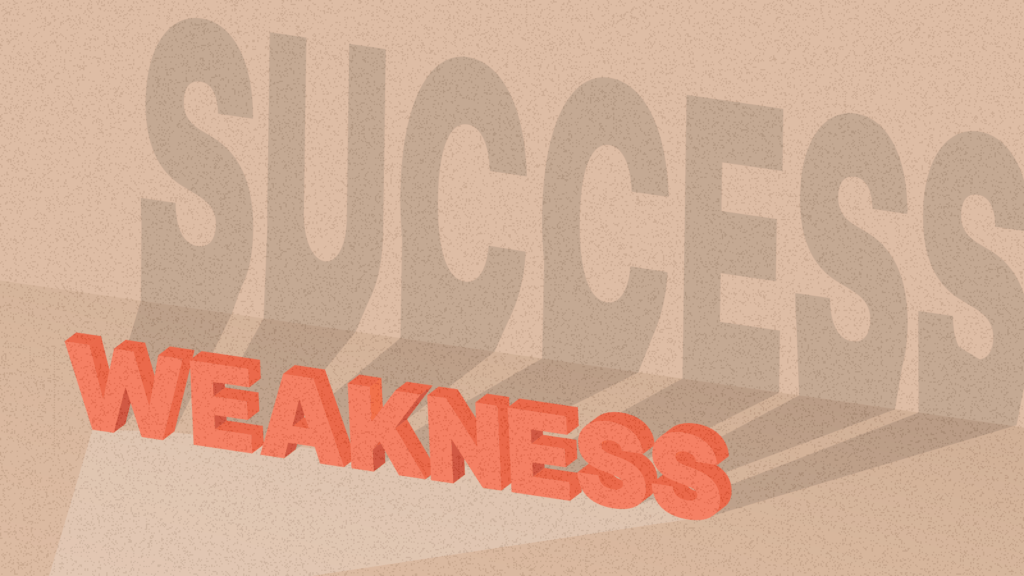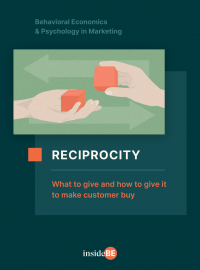How Admitting Your Weaknesses Upfront Could Help You Win Your Next Negotiation

How do you prepare for a negotiation when you know you have a disadvantage? Admitting your weaknesses could be the best thing you ever did.
In this article, you’ll find out:
- What the Sarick Effect is (and why you should care);
- How leading with a weakness won a $3.3 MILLION investment; and
- And why mentioning your weaknesses could win your next negotiation.
Thought leaders have acknowledged the ‘Sarick Effect’ as perhaps one of the most powerful, yet least utilised negotiation tools. Named by Adam Grant in his best-selling book Originals, it is a solid, counter-intuitive, trust-winning strategy. This technique of admitting your weaknesses to your investor, client, or counterparty could be more successful than you might think.
By revealing your weaknesses upfront, you may be priming your client to hear your story in a very different way.
But to use it takes a lot of bravery, and it’s perhaps not a tool that will always enable you to win. But when used correctly, it’s an unorthodox, unexpected, and robust instrument that can disarm your audience, who naturally look for the negatives when presented with a new idea or business outlook.
Many of you have stood in front of a client or customer, well aware of the reason why you won’t be winning the sale. And the instinct is to either avoid the adverse facts or embroider the truth. But by revealing your weaknesses upfront, you may be priming your client to hear your story in a very different way.
A powerful yet under-utilised concept
Most of us conduct negotiations in business or even in our daily lives; they’re usually seen as a win or lose scenario. But in some cases, you might decide, instead, to embrace your weaknesses.
“I came across this many times in my professional life, but I didn’t know what to call it,” commented Marian Kovac, Business Advisor, and Behavioral Expert. “As soon as I read Adam Grant’s book about the Sarick Effect, all of a sudden the light bulb went off in my head and I thought, that’s it.”

Discover ground-breaking ideas and fascinating solutions.
Yuri Gagarin might not have been the first man in space had he not admitted to his weaknesses.
Gargarin was one of three astronauts under consideration. The chief of staff responsible for the selection asked them all, “Are you tired?” and of course, after months of training, they must have been. But Gagarin was the only one to admit this, and by being honest in such a situation, the selection team saw him as more trustworthy, and this was one of the critical game-changers in their decision-making process.
What exactly is the Sarick Effect?
Coined by psychologist Adam Grant in his 2016 book, Originals; How Non-Conformists Move the World, Grant created a character called ‘Leslie Sarick’ who ‘put his worst foot forward’ to illustrate this negotiating tactic, which puts trust and authenticity to good use.
This technique can be used in any form of communication as a trust builder or a trust-building instrument.
An excellent example of this is Rufus Griscom, the founder of online parenting magazine and blog network Babble. Griscom sought growth funding using a somewhat counterintuitive approach. Griscom presented the investors with reasons why not to invest first. This approach could have killed his growth ambition; however, luckily, it didn’t. Instead, he successfully secured $3.3 million in investments. Showing weaknesses as a start-up is different from selling a well-established company. But, using the same technique, he sold to Disney for $40 million and secured the EVP position. Why does such a counterintuitive approach work?
This technique can be used in any form of communication, and Marian Kovac describes it as “a trust builder or a trust-building instrument.” There are various names and modifications of the model, but it can be framed as the ‘Sarick Effect’ when building on your weakness.
Mark Goulston, psychiatrist and executive coach, describes the technique of pointing out weaknesses in a non-threatening way by not diminishing the qualities of your opponent, which will steer the situation to your advantage. In his 2010 book, Just Listen. Discover the Secret to Getting Through to Absolutely Anyone, he describes ways to achieve buy-in, one of these being that “instead of hiding a weakness or problem, neutralize it. Show poise by openly expressing the misgivings people have about you, and they’ll be more likely to give you their positive and undivided attention.” He names this technique the ‘stipulation gambit.’
If you genuinely don’t know the answer to something, saying “I don’t know” can show you as a more trustworthy person.
Being open and acknowledging your uncertainty when dealing with another person can work to increase trust. If you genuinely don’t understand or know the answer to something (this, of course, doesn’t apply in cases where you really are supposed to know the answer), sometimes saying “I don’t know” can show your vulnerability. As a result, you may be seen as a more trustworthy person.
When learning to negotiate with a client or partner in business and management courses, methods will often be described non-specifically as ‘building rapport’; but as Marian Kovac says, “very few tell you how.” One of these ways is by highlighting your weaknesses in advance to win the party’s trust by being willing to show that you’re vulnerable, that you’re aware of these things, and that it’s not a danger to them.
How does it work?
In the article, The Persuasion Knowledge Model: How People Cope with Persuasion Attempts, professors in marketing, Marian Freistadt and Peter Wright found that overconfidence ignites a red light in your opponent’s mind and activates their defense mechanisms. However, resenting potential weaknesses disarms the opponents while raising problems will shift the focus from defense to problem-solution.
Admitting to having problems and not controlling everything may be seen as a sign of sincerity and modesty.
Usually, both parties contribute, and by this endowment effect (we value our ideas more highly) and the uniting sense of having something in common (a problem to solve), this turns our opponents into our collaborators and increases the chances of the issue being adopted and accepted.
Presenting our negative attributes upfront makes us appear more credible and trustworthy. Admitting to having problems and not controlling everything may be seen as a sign of sincerity and modesty. Showing a weakness requires much more courage and guts than hiding it.
Three cases of when to employ the Sarick Effect
1. Your company is having financial issues
A positive spin on an underachieving company can raise suspicion, and when quizzed on the subject, we may react by employing a business tactic of evasion. Revealing your weakness upfront can put your story in a completely different context and, in the words of Marian Kovac, can be a “game-changer or even a game saver”.
Being open about the need for investment and partnership to deal with issues the company is experiencing may be more convincing. Being honest can change the situation from suspicion of what is not revealed to acceptance as the weakness is acknowledged. By using the tools of the Sarick Effect, you will be bringing the obvious problem into the open, and by admitting your fault, your investors will see you as trustworthy.
2. Negotiations are at a standstill
Sometimes in a negotiation, both parties have to admit that progress is not being made. Chris Voss, businessman, former FBI hostage negotiator, and author of Never Split the Difference: Negotiating as if Your Life Depended on It, explains how giving power to the opposing party can be a potent negotiating tool.
You are more likely to get what you want if the party you are negotiating with feels like the solution was their idea.
When in a stalemate, he says, “you are more likely to get what you want if the party you are negotiating with feels like the solution was their idea”. Voss recommends using the phrase, “It seems like you’ve thought about this a lot.”
This example of the Sarick Effect can result in what Voss calls “unlocking the floodgates of truth-telling.” Recognising people’s effort helps them up and “creates a connection in the brain where people just start talking, and that’s how you get them to put things on the table without them thinking about it.” Being allowed to be honest makes the situation more flexible.
3. In sales and fundraising
In many sales situations, the pitch is something along the lines of “this is the best that money can buy.” In an archetypal sales scenario such as selling a second-hand car, when using the Sarick Effect, the dealer would reframe this sales pitch. For example, they might acknowledge that the buyer won’t be getting the same perks from this purchase as they would from buying a brand new car; however, that doesn’t mean the vehicle isn’t excellent for the sticker price.
This open approach comes across as both honest and trustworthy and is very different from a heavy sales pitch avoiding or playing down the more obvious lesser qualities of the product.
Similarly, a fundraising message can admit to not being able to solve all the problems in the world but addresses the one problem they’re working to resolve in a clear and open manner.
The Sarick Effect: A solid and robust tool
But use it wisely.
When using the Sarick Effect in your business or personal life, be aware of three potential dangers:
1. The Way You Present the Weakness
The context in which the information is conveyed is of the utmost importance. By presenting our weakness confidently and candidly, we’re showing that we’re brave enough to admit to these aspects of our business or personality. This openness counts towards our trustworthiness. Further on in the negotiation, the audience will be naturally less suspicious when the conversation turns to your advantage.
Revealing your weaknesses before familiarizing yourself with the negotiating style of our counterparty would not be wise
However, revealing your weaknesses before familiarizing yourself with the negotiating style of our counterparty would not be wise. Experienced negotiators can usually very quickly assess their client or customer. In cases where reciprocation does not occur, there’s not much else you can do except take a different approach.
2. Not Disclosing the Full Truth
If the negotiator is acting or using a tactic, it will not be effective and could even have the opposite effect on the party.
3. Don’t Finish With a Weakness
You should never end a presentation or meeting with a weakness. The peak-end rule states that people remember you by the first impression, but they remember you even more by the last impression.
If the last impression you leave the room with is that either you or your project has weaknesses, then this will override the positives that you might have covered earlier on in the presentation. When using the Sarick Effect, one should introduce the weakness earlier in the conversation.
Key Takeaways:
- The Sarick Effect is a strong, counter-intuitive, trust-winning strategy that works by mentioning negative aspects when presenting an idea, product, or ourselves, thereby making us appear more trustworthy.
- It’s a powerful and underutilised tool. Using it correctly has the power to disarm your audience and draw attention away from the desire to look for the negatives in your presentation or sales pitch.
- The technique can be used in many different scenarios. When you’re aware of potential problems or feel like you’re not making any progress, then it might be the perfect time to bring in this powerful technique.
- Bring up your potential weaknesses at the start of the conversation. To highlight any weakness at the close of the conversion will leave this message in your audience’s mind.




